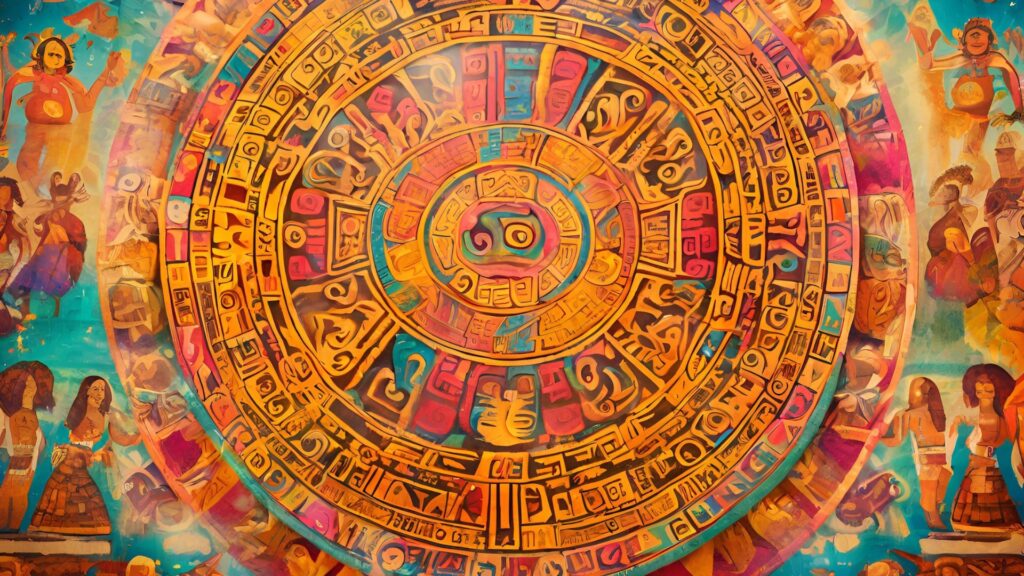
Artistic expression, an intrinsic facet of human culture, has transcended the boundaries of time and place. Throughout history, it has been a vehicle for the transmission of ideas, emotions, and the very essence of what it means to be human. Ancient civilizations, with their rich tapestry of art, music, architecture, and social structures, offer profound insights into the value of artistic expression as a means of embracing and celebrating freedom. In this exploration, we journey through the annals of history, from the Nile River to the Indus Valley, uncovering the ways in which ancient wisdom understood and harnessed the power of artistic creation to embody and communicate the essence of freedom.
Artistic Expression in Ancient Egypt: A Celebration of Life and Afterlife
Ancient Egypt, with its majestic pyramids, colossal statues, and intricate hieroglyphs, provides a vivid canvas of artistic expression rooted in the celebration of life and the afterlife. The pharaohs, considered divine rulers, used art and architecture to assert their authority and immortality. Hieroglyphics served as both a written language and an artistic medium, intertwining the spiritual with the mundane.
One of the most iconic examples is the Great Sphinx of Giza, a colossal sculpture with the body of a lion and the head of a pharaoh, believed to be Pharaoh Khafre. The Sphinx not only demonstrates the Egyptians’ mastery of artistic craftsmanship but also embodies the concept of eternal guardianship and the belief in the continuity of the soul beyond death. It speaks to the profound connection between artistic expression, power, and the pursuit of immortality in ancient Egypt.
Egyptian Bastet Statue – Hand Painted Goddess of Sunrise, Music, and Fertility Sculpture – 12-Inch Ancient Egypt Protector of Women Figurine (Cold Cast Bronze)
VibesUP 5G EMF Earth ion Pyramid LARGE – Whole Room Energy Purifier
Design Toscano WU71647 Wings of Isis Egyptian Revival Desk Mantel Clock Statue, 16 Inch, full color
Harmony and Freedom in Greek Art and Music
In ancient Greece, the birthplace of democracy and philosophical inquiry, artistic expression was closely tied to the pursuit of freedom and harmony. Greek art celebrated the human form, encapsulating the belief in the beauty of the human experience. Sculptures like the Venus de Milo and the Discobolus of Myron epitomized the idealized human physique, representing both the physical and philosophical pursuit of perfection.
Greek music, too, played a pivotal role in their culture. Pythagoras, the ancient Greek philosopher and mathematician, explored the mathematical harmony of musical notes, paving the way for a deeper understanding of the interplay between numbers and art. The concept of the “Golden Ratio” in architecture, derived from mathematical principles, underscores the Greeks’ commitment to balance and proportion in their artistic creations. This harmony was seen as a reflection of the ideal state of democracy and freedom.
Aphrodite Venus De Milo Greek Goddess Cast Marble Statue Sculpture 15.55 inches
Discobolus Discus Thrower Nude Male Athlete Greek Roman Statue Sculpture, lk15/3, Height: 44 cm (17.3 inches)
Estia Creations Pythagoras Sculpture Bust Ancient Greek Philosopher Great Mathematician
The Indus Valley Civilization: Urban Planning as an Expression of Freedom
The ancient Indus Valley Civilization, dating back over 4,000 years, provides a unique perspective on artistic expression through urban planning and architecture. The meticulously planned cities of Mohenjo-Daro and Harappa showcased a remarkable understanding of urban design, with grid-like streets, advanced drainage systems, and a sense of order that reflected the civilization’s values.
This urban planning was not merely utilitarian but represented an expression of societal freedom and egalitarianism. The absence of monumental structures or clear signs of hierarchical authority suggests a society in which power was more evenly distributed. The cities themselves were an artistic expression of social organization that valued harmony and cooperation, creating a sense of freedom through order.

Artistic Expression in Mayan Culture: The Dance of the Cosmos
In the heart of Mesoamerica, the ancient Mayan civilization flourished with a deep connection to art and spirituality. The Mayans, renowned for their intricate calendar system and astronomical achievements, saw the cosmos as an integral part of their daily lives and artistic expression.
Mayan architecture, exemplified by the pyramids of Tikal and Chichen Itza, was designed with astronomical precision, aligning with solstices and equinoxes. These structures served as temples for rituals and ceremonies that honored the cosmos. The Maya’s intricate artwork and hieroglyphs conveyed their understanding of the interconnectedness of all life forms and celestial bodies.
One prominent example is the Dresden Codex, a Mayan manuscript that contains detailed astronomical and calendrical information. It reflects the Mayans’ belief in the cyclical nature of time, emphasizing the idea that life and freedom were part of a cosmic dance, harmoniously intertwined with the universe.

The Eternal Legacy of Artistic Expression and Freedom
Artistic expression has been an enduring companion on humanity’s quest for freedom. These examples from diverse cultures and outlets illustrate how art, music, architecture, and social organization have served as both mirrors and catalysts of our collective yearning for freedom. As we delve into the wisdom of the ancients, we uncover a profound truth: artistic expression is not merely an aesthetic endeavor but a fundamental aspect of what it means to be free. It embodies the human spirit’s indomitable drive to transcend limitations, communicate our deepest truths, and celebrate the boundless potential of the human experience. In tapping into this ancient wisdom, we discover that the freedom to create is, in itself, a masterpiece of the human spirit.






